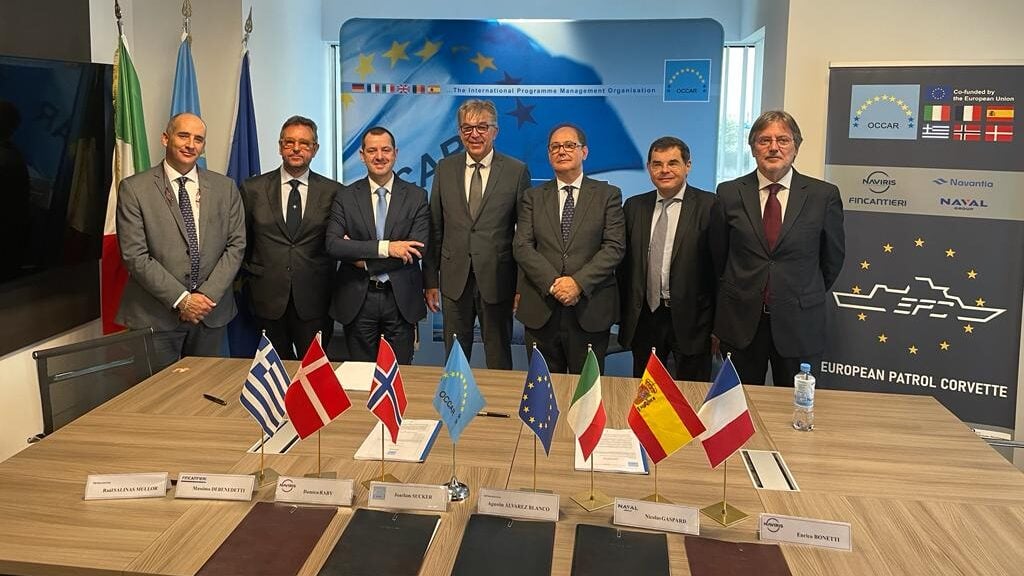
Officials involved in the multinational European Corvette Project have signed a first phase contract allowing shipbuilders to focus on design of a next generation class of naval vessel (Naval Group)
BELFAST — Europe’s leading military armament agency, the continent’s largest shipbuilders and national partners have signed Modular and Multirole Patrol Corvette (MMPC) contracts to implement the first phase of the European Patrol Corvette (EPC) project.
A consortium led by Naviris, itself a joint venture between France’s Naval Group and Italy’s Fincantieri, announced the move in a Wednesday statement, after a signing ceremony with OCCAR (Organisation for Joint Armament Cooperation) took place earlier at the agency’s premises in Rome. The consortium also includes Spain’s Navantia and “beneficiaries” from Greece, Denmark and Norway.
The project aims to first develop and then, eventually, produce cutting-edge fleets of corvettes for use by member nations’ militaries and police, depending on their mission. Officials have not shared when the vessels are expected to enter service.
A total budget of €87 million ($92 million) has been allocated for the project’s first phase, split between €60 million ($63 million) in European Commission (EC) grants and €27 million ($28 million) from member states Italy, France, Spain, Denmark, Greece and Norway. Ireland, Portugal and Romania currently hold EPC observer status.
The “full scope” of the project will be managed by OCCAR, which acts as a granting authority, with mandate from the EC and it also holds contracting authority based on a mandate from member states, according to the consortium statement.
A separate but supporting “consortium agreement” was also signed by companies involved with MMPC “whose objective is to rule the execution of the project, maximizing synergies and collaboration among European shipbuilding industries,” added the consortium.
The first MMPC contract, running for two years, covers a an initial design of a “next generation class of naval vessel” or EPC.
The EPC will, at first, include two main configurations; Long Range Multipurpose and Full Combat Multipurpose.
Both designs are expected to maximize “innovations, synergies and cross-fertilization” from Naval Group, Fincantieri and Navantia, to meet the operational needs of European navies.
“The produced design will be modular and flexible, more energy-efficient, greener, safer, more interoperable, and cyber-secured,” said the EC in a Thursday statement.
Fundamentally, EPC has been established so the five member state navies can collaborate to define requirements for a second rank surface combatant, measuring 110 meters long and weighing 3,000 tons, to replace several fleets in the future.
The consortium noted that based on requirements “specified by each Navy” the ships will be capable of carrying out a range of missions “as diverse as surveillance on the high seas with a high degree of autonomy, or law enforcement and sovereignty affirmation missions closer to the coast.”
It added that through joint development of “a new and disruptive class of corvettes” the companies involved will aim to “ensure and foster a European sovereignty based on European ‘in-house’ skills and know-how.”
After opening up a tender “call” the EC first selected a MMPC proposal from Naviris, which combined 40 companies in 12 countries, in July 2022.
Australia tops up Ukraine military aid with $100M
Australia has already supplied Ukraine with 120 Bushmaster vehicles, six 155mm howitzers, 56 M113 armored vehicles, 14 special operations vehicles and its signature cardboard drones.


























